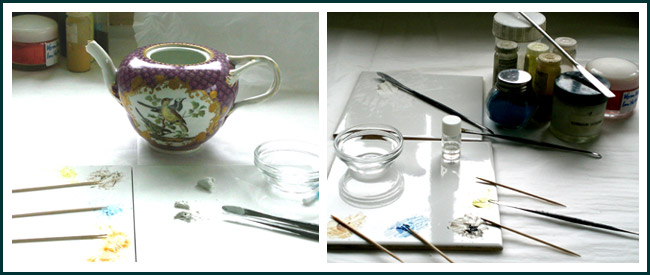Ceramics cannot be re-fired successfully. The high temperatures necessary for firing a newly made replacement part would destroy the original object; glazes and decorations would discolour badly and older parts would crack of even break into pieces.
Modern repairs are carried out with materials that do not need firing in a kiln but cure at low temperatures. Filling and modelling materials could, for example, consist of plaster of Paris or synthetic resins. Retouching media may also be resins or acrylic glazes. Fills and glazes can be tinted with pigments to match the body and / or surface of the original ceramic. Much skill and experience is needed to attain a close match in colour and texture. The conservator / restorer will select the correct materials for your object, and will consider durability as well as ageing properties.
All repairs should be ethical, which means it should be possible to reverse the process at a later stage. The original object must not be damaged during the process of repairing, for example by scratching, drilling or by removing any large or small parts. No bonding materials, glazes or paints must be allowed to seep into the body of the ceramic and it must be possible to remove these either by physical means (e.g. scalpel blade) or a few approved chemicals.
